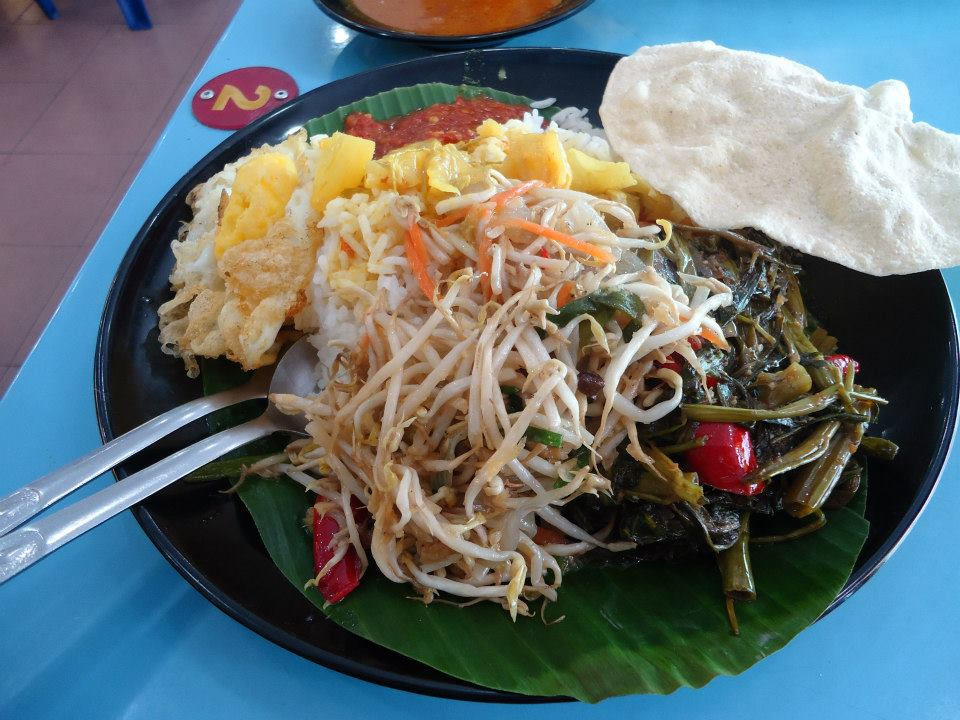Nasi Padang
- Matthew P G

- Feb 14, 2022
- 3 min read
Updated: Mar 17, 2023

Nasi Padang, Christmas Lunch. December 2012
Two faces of "nasi padang"
Nasi padang should not be translated directly to English since it will yield "padang rice" which can be further translated into "field rice". Luckily, most people just eat the stuff and don't bother with the translation.
Padang is actually a big city on the island of Sumatra and is the commercial and economic capital of the Minangkabau people. I suppose since Minangkabau is a mouthful, their neighbors settled on calling them "Padang" people. Great traders, they ranged all over the Indonesian archipelago and the Malay peninsula. With them came their fiery food and their unique style of eating it.
In Indonesia, "Warung Padang" (Warung = small restaurant) are ubiquitous. Virtually every small town in Indonesia has one and, although maligned by some, they do provide guaranteed "halal" food in regions of Indonesia that are not staunchly Muslim as well as some familiarity where local cuisine might be "mysterious". The Javanese tend to look down their noses at Padang food as "too spicy - chili is the only seasoning", but there are successful Warung Padang all over Java and they certainly are not hurting for customers. The food is correctly described, however, VERY hot and spicy.
Typically one enters a restaurant, sits down, and the food is served family style. Large bowls are set on the table and customers spoon and ladle food onto their plates until sated. Then the waiter comes and eyes how much food was taken (a highly mysterious process, even for Indonesians) and a calculation is made for a bill. It is never expensive, but the calculation does remain suspect. Add to that, that the serving dishes are returned to the main kitchen and uneaten food is recycled for the next customer. That always put me off, but my long time friend in Jakarta, Marlis (himself Minangkabau), claimed the food was so spicy that no bad gut bacteria could survive on it. Hmmmm.....
One time when traveling in Indonesia with my dear old friend Lono and my late friend Anto, we stopped for Padang food. It would have been neither of their first choices (since they were Javanese), but as I recall for some reason we had no other option. Since it was Anto's first time in a Padang restaurant, he thought the idea was to "eat everything served". I only thought Anto (who was a young, ravenous man at the time) was famished. After we got the somewhat steep bill, he commented on the expense. I said, "well you ate most of the food". Only then did he realize that we were paying only for what we took. Lono and I teased him about that meal for years to come.
After moving to Singapore, I came to know that nasi padang, one of my favorite lunchtime treats, there existed as an open selection of Malay dishes at food stalls that the STAFF (not the customers) piled onto a plate (or takeaway box) and then charged diners accordingly. There still existed a bit of mystery in the pricing, but the stall owners decided the portion sizes, so it seemed more legit (and far more hygienic). The food was prepared throughout the morning and then served at lunchtime until gone. Don't go for Padang food at 3pm and expect much of a selection. I was usually there just before noon to have my choice of everything. In the final Singapore years when Brian was staying in Chinatown, there was a small nasi padang lunch place near the apartment. I was a regular and the owners were very kind (and the food was to die for). A few US dollars for freshly made Southeast Asian cuisine. I miss it.
So there it is - the Minangkabau people who go by "Padang" brought their food all over the region. In Singapore, it has become quick lunch food that is not necessarily "extra spicy". In Indonesia it is a fiery sit down, family-style meal guaranteed to be halal. I never asked Marlis what he thought about the name "Padang" being used so commonly outside of the Minang Highlands. Was it an internal eye roll or a sense of pride? Or maybe nothing - after all, I don't react to Kentucky Fried Chicken overseas whatsoever. ha!



Comments